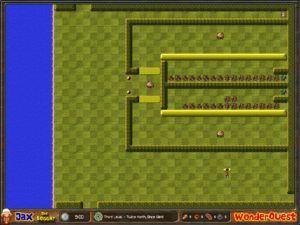Game Idea: Locked Room Mystery
A recently-announced itch.io game jam is giving me ideas — ideas that are probably too vague and ambitious for the jam, so I’m going to describe them here instead. The jam is titled “No Shit Sherlock“, and it bears this mission statement:
How many times have you bought a detective game hoping to feel like Sherlock Holmes and got disappointed? I’ll tell you. Too many.
Detective games are broken, most of them at least.
These games should be about feeling like the smartest person in the room. Seeing what everybody else missed and connecting the dots. Getting to that wonderful moment in which everything clicks and you figure out what’s going on.
Why aren’t we making better detective games? Well, because it’s damn hard. We need to experiment, go wild and try out new things. And when it comes to trying out new solutions nothing beats a jam. Let’s get together as a community and fix detective games for the sake of humanity
Now, a thing about game jams: The ideas you get are going to be influenced by whatever is on your mind, which tends to be the games you’ve been playing. For example, when there was a Myst jam a couple of years ago, I was spending a lot of time playing a tower defense game, and so it occurred to me that Myst‘s “Channelwood” section, with its network of walkways, bore a superficial resemblance to a tower defense, and I wound up making a tower-defense-ish thing in that setting. Nowadays, I have DROD on the mind, and it’s in that frame of mind that I read this announcement. And… it’s a surprisingly good fit. “That wonderful moment in which everything clicks and you figure out what’s going on”? The only difference between that and the the experience of discovering the lynchpin in a good DROD puzzle is the tense, whether you’re figuring out what already happened or what has to happen.
Locked room mysteries in particular resemble DROD puzzles, or a certain style of DROD puzzle: the ones that look flatly impossible until you have the right clever idea. Finding that clever idea is often a matter of deduction — once you have eliminated the unworkable, whatever remains, however difficult, must be correct. I’m imagining (vaguely) a game that makes this shared sensibility more explicit.
You’d have a room — probably a grid of discrete tiles, just like in DROD, to keep things simple. You’d start by being shown the room in its final state, as it was when the police arrived. DROD lets you right-click on elements to get more information about them, and Wonderquest does it on mere hover; dress this feature up with a magnifying-glass-shaped cursor and it becomes thematic. This would give the player some ability to learn about how things behave and start to form theories about what must have happened before proceeding to the second stage: reproducing events. A flashback, in which you control one suspect of your choice and try to make the room match the state in which you found it. All other suspects would behave according to simple deterministic rules, as would everything else in the environment. Maybe there would be obvious approaches that almost work, but not quite — the bloodstains are one tile away from they belong, or the broken glass is on the wrong side of the window. Any such discrepancies would be highlighted, and you’d get to try again.
The key thing here would be to try to eliminate ambiguity. It seems to me that most mystery games, if they make any attempt to induce clever deductions on the player’s part, fail by relying on assumptions that the player may not share. The player gives up and reads the solution, and at a crucial point it says “The only way to the second story window was by a ladder in the garage…” and the player’s response is “What? I could climb that wall!” A droddified reconstruction stage would make it clear exactly what the mechanics of the gameworld are, and thus what is and is not possible.
 Comments(1)
Comments(1)
